Horse with Decorated Woman’s Saddle Carrying Two Bags From Saddle Horns 1900
by Lee Major Moorhouse
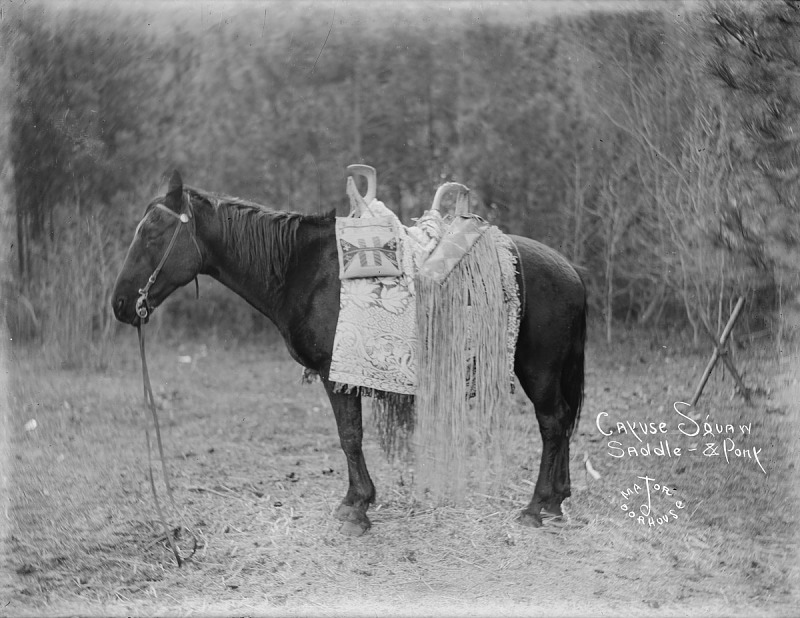
Gelatin print from glass negative. Courtesy National Anthropological Archives, Smithsonian Institution.
Above: The saddle in this circa 1900 photograph accurately represents a Cayuse woman’s saddle as would have been seen by the Lewis and Clark Expedition in 1805.[1]Steven L. Grafe, Peoples of the Plateau: The Indian Photographs of Lee Moorhouse, 1898–1915) (Norman, Oklahoma: University of Oklahoma Press, 2005), 82.
While at Long Camp on 6 June 1806, Broken Arm shared news that Shoshones had traveled to the mouth of the Walla Wallas seeking to reconcile with the Cayuse people living there. The captains must have been elated as “their nation [the Shoshones] had received the talk which was given their relations on the head of the East fork of Lewis’s river [Lemhi Valley] last fall, and were resolved to pursue our Councils.” Clark’s name for the Cayuse, the Ye-E-al-po Nation, may have been his phonetic spelling of the Nez Perce name for them—Waiilatpu.[2]Moulton, Journals, 7:342n5; Theodore Stern, Handbook of North American Indians: Plateau Vol. 12, ed. Deward E. Walker, Jr. (Washington, D.C.: Smithsonian Institution, 1998), 417.
Some believe Yellepit to be Cayuse rather than Walla Walla. The point is somewhat moot. The Cayuses and Walla Wallas were already inter-marrying nearby peoples such as the Umatillas and Nez Perces. The isolate Cayuse language was declining in favor of the Sahaptian Nez Perce language. Despite that, the Cayuse remain a distinct people, ignobly connected with the murder of the missionaries Marcus and Narcissa Whitman along with eleven others in 1847.[3]Robert H. Ruby, John A. Brown, and Cary C. Collins, A Guide to the Indian Tribes of the Pacific Northwest (Norman: University of Oklahoma Press, 2010), 17–19; Stern, 395.
Cayuse horsemanship was at such a high level that Indian ponies became known as Cayuses. Many early American settlers came to use the term derogatorily, to them meaning an inferior or unruly horse. But today, The Cayuse Indian Pony of the Northwest is a distinct and desirable breed.[4]See “Breeds of Livestock – Cayuse Indian Pony,” Oklahoma State University, http://afs.okstate.edu/breeds/horses/cayuseindian/index.html/ (accessed 9 October 2021).
Related Pages
October 16, 1805
A musical welcome
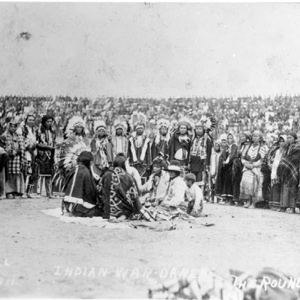
The paddlers negotiate the last of the Snake River rapids and the expedition arrives at the Columbia River. Soon after, they are given a musical welcome from a large group of Yakamas and Wanapums.
April 26, 1806
A crowded, dusty trail
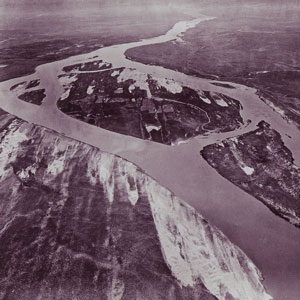
The Corps continues along the north shore of the Columbia River reaching the low plains near present Plymouth, Washington. A young boy catches several Columbia River chub, a species new to science.
April 27, 1806
Yelleppit's village

The expedition passes the Umatilla River and then climbs to the high plain above the Wallula Gap. Late in the day, they are met by Chief Yelleppit and guided to his village opposite the Walla Walla River.
April 28, 1806
Yelleppit brings a horse
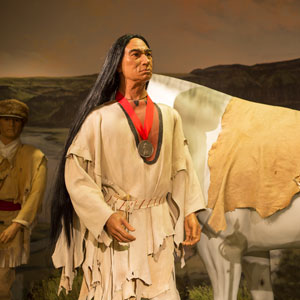
Across from the Walla Walla River, talks begin with Sacagawea and Charbonneau as interpreters. Yelleppit brings Clark a horse, Clark gives medical aid, and Pvt. Frazer buys ten fat dogs for consumption.
June 6, 1806
Still no guides
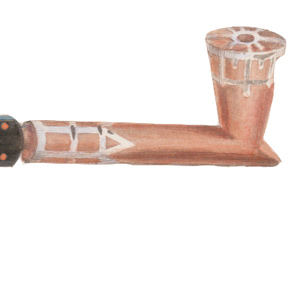
Clark travels to Broken Arm’s village to repeat a diplomatic speech and ask for guides. He is given two peace pipes—one for him and the other for the Shoshones. Lewis describes the western tanager.
Notes
| ↑1 | Steven L. Grafe, Peoples of the Plateau: The Indian Photographs of Lee Moorhouse, 1898–1915) (Norman, Oklahoma: University of Oklahoma Press, 2005), 82. |
|---|---|
| ↑2 | Moulton, Journals, 7:342n5; Theodore Stern, Handbook of North American Indians: Plateau Vol. 12, ed. Deward E. Walker, Jr. (Washington, D.C.: Smithsonian Institution, 1998), 417. |
| ↑3 | Robert H. Ruby, John A. Brown, and Cary C. Collins, A Guide to the Indian Tribes of the Pacific Northwest (Norman: University of Oklahoma Press, 2010), 17–19; Stern, 395. |
| ↑4 | See “Breeds of Livestock – Cayuse Indian Pony,” Oklahoma State University, http://afs.okstate.edu/breeds/horses/cayuseindian/index.html/ (accessed 9 October 2021). |
Experience the Lewis and Clark Trail
The Lewis and Clark Trail Experience—our sister site at lewisandclark.travel—connects the world to people and places on the Lewis and Clark Trail.
Discover More
- The Lewis and Clark Expedition: Day by Day by Gary E. Moulton (University of Nebraska Press, 2018). The story in prose, 14 May 1804–23 September 1806.
- The Lewis and Clark Journals: An American Epic of Discovery (abridged) by Gary E. Moulton (University of Nebraska Press, 2003). Selected journal excerpts, 14 May 1804–23 September 1806.
- The Lewis and Clark Journals. by Gary E. Moulton (University of Nebraska Press, 1983–2001). The complete story in 13 volumes.

